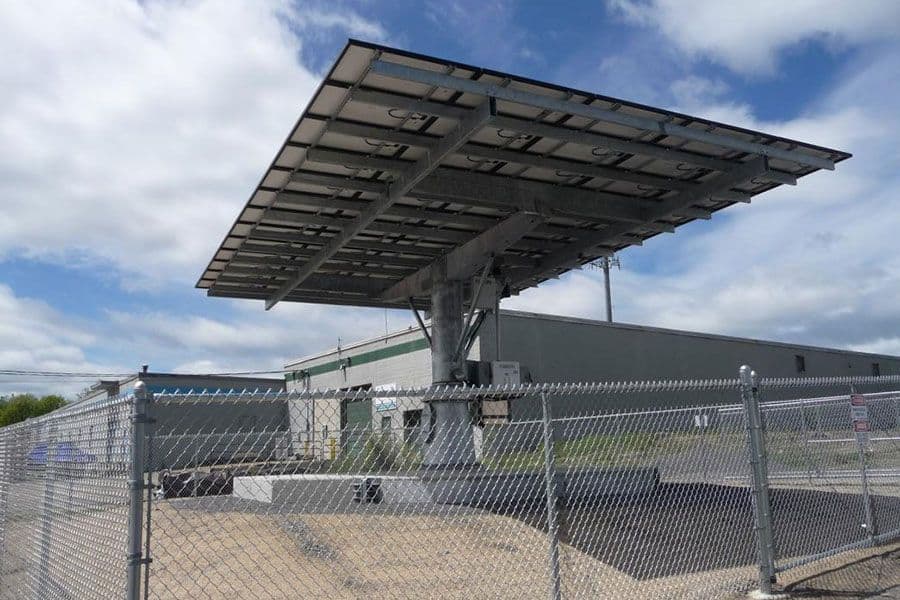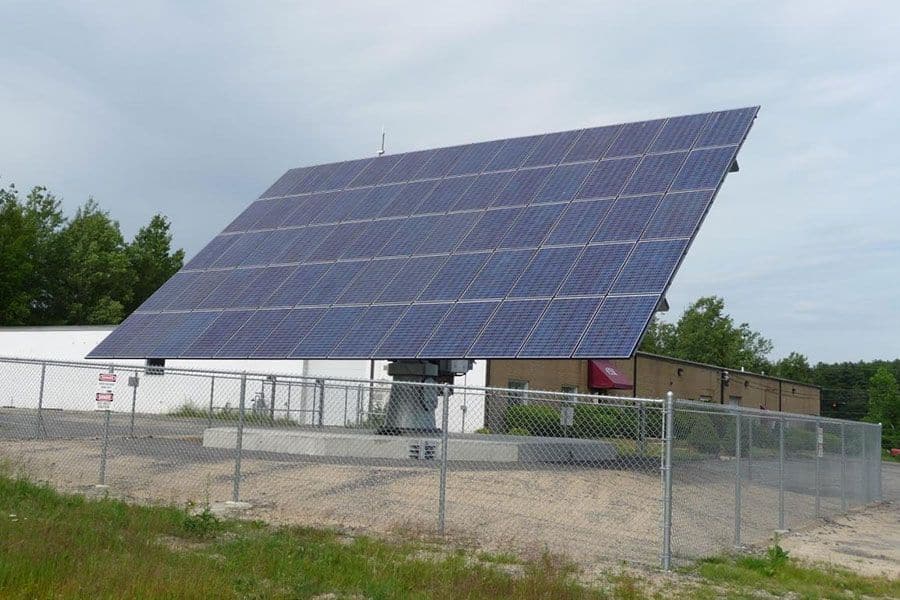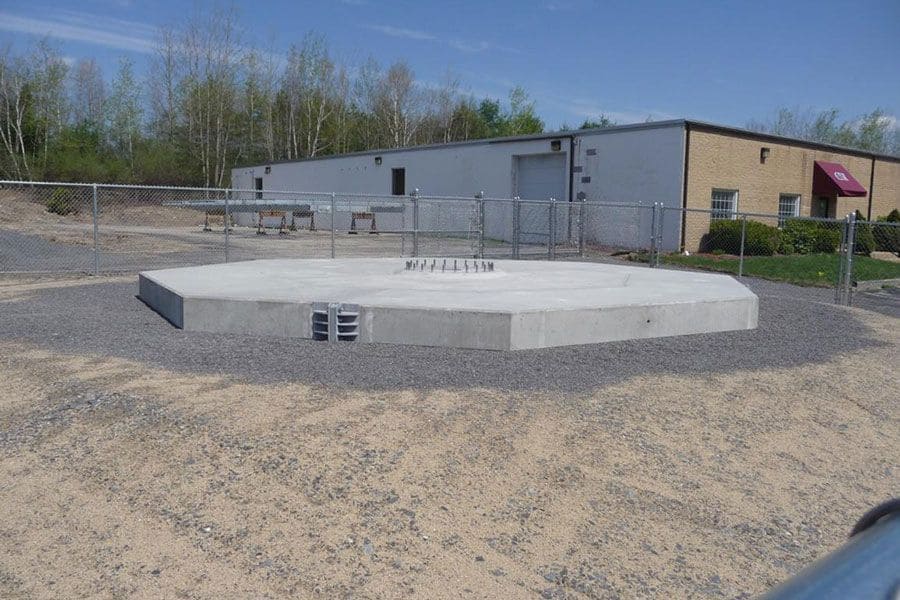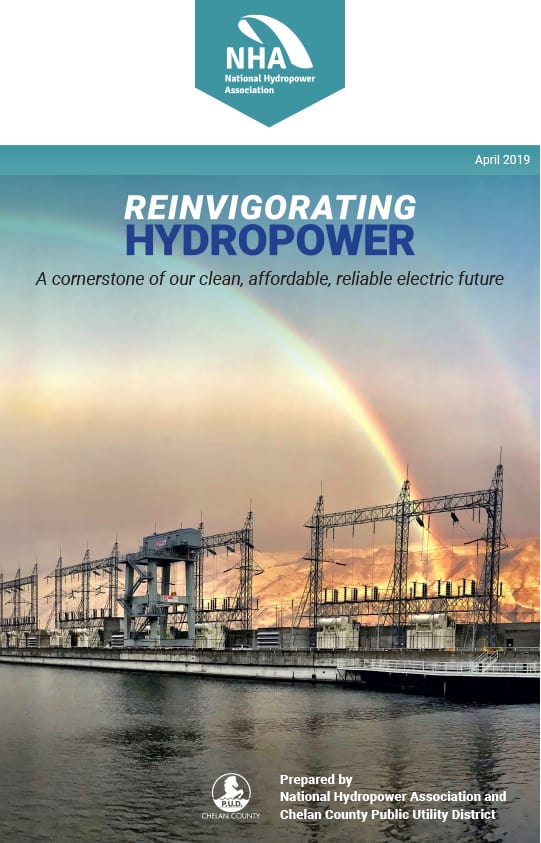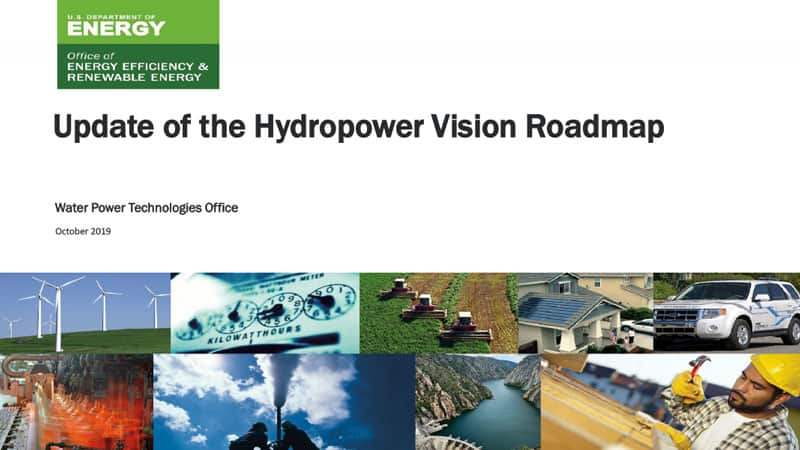FDE Hydro Power has designed and developed a proprietary Dual Axis Utility Scale “Solar Tracker” primarily for its Hydro Micro Grids or Remote Community packages.
Renewable Energy Solutions
Solar Tracker Solutions
Worcester Polytechnic Institute (WPI) & FDE Hydro (FDE) partnered to research, design and develop a proprietary utility scale dual access solar tracking system primarily for its Hydro Micro Grids or Remote Community packages.
Analytics and testing, provided by Worcester Polytechnic Institute, have  shown that this unique design results in a 40% power efficiency rating and can withstand wind speeds up to 200 MPH locked in the horizontal, stowed position (45 MPH when operational).
shown that this unique design results in a 40% power efficiency rating and can withstand wind speeds up to 200 MPH locked in the horizontal, stowed position (45 MPH when operational).
In addition to the dual axis rotation, the design features a “sensor suite” that allows the tracker to measure and adjust to wind gusts, discard snow loads and track positioning of the sun. The foundation is comprised of two, joined precast concrete sections that are sized to the weight and capacity of each tracker. Each tracker weighs approximately 30 tons and is earthquake resistant.
The standard tracker design includes 80’ x 28’ array collector with 96 panels and output of 50kw, depending on panel choice. All panels come wired to the inverter and transformer…all PLC controlled with a dedicated network for Scada system and all UL approved.
The Solar Tracker can be quickly sited and permitted, is rapidly deployable and can be easily dismantled, transferred, and relocated as needed. Besides large utility applications, uses are mostly commercial applications, landfills, industrial sites, remote communities, military installations, and others.
Like all FDE Hydro hydro or energy systems, the efficient Solar Tracker requires a smaller footprint (compared to a typical ground mount solar array), reduces overall costs and is environmentally clean.
1

